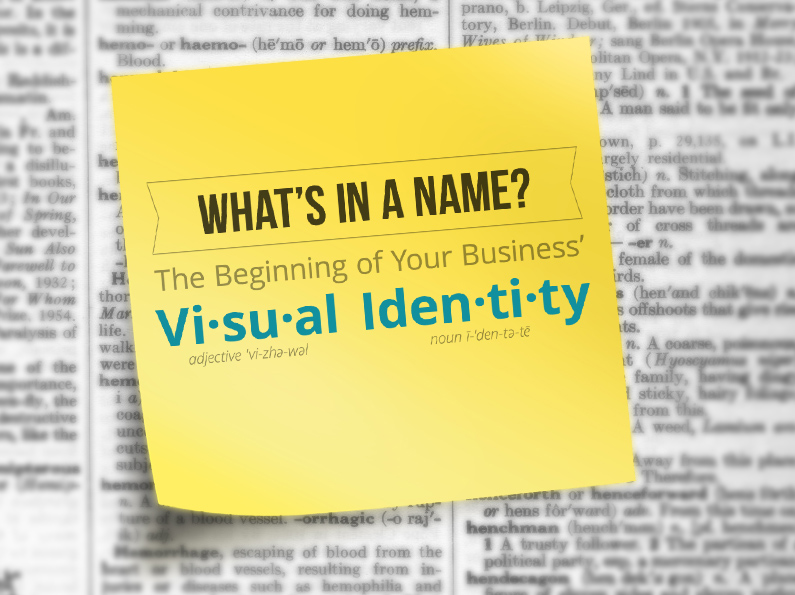We know that a company’s brand is more than a logo – it is the whole experience you produce for your customer and client. But visual identity is very important and it begins with your company’s name.
Click here to read Part 1 in this Branding Series.
When we first work with a business, they have most often already decided what to name themselves. They’ve normally registered their business and even registered their domain. We often find ourselves wishing they’d called us before the ball was rolling as it can be very expensive to rewind.
What is the Recipe for a “Good” Name?
The best names are memorable, unique, have some affiliation with a company’s service or history, and are short and to the point. Examining national or well established companies in your industry are good places to start learning. Most have likely built their success in part because of a good name and a great brand.
Another good tool in examining your business name is to ask yourself “why that name?” If the explanation takes 10 minutes, or it isn’t already self-explanatory, you likely need to choose something else.
People often use their first or last name as part of their business name (often because they cannot think of anything else.) There aren’t very many names we would recommend this for. For one thing, names are often not spelled the way they sound. If you are ever asked to spell your name, don’t use it in a business. Also, if there is even the remotest chance your business will change hands or you might want to sell it some day, then don’t use your name. Think ahead…beyond the next few years. Plan accordingly.
UplinkSpyder is memorable in part (either Uplink or Spyder). It’s definitely unique. It’s short and every part of our name identifies something we do. Uplink=internet. Spy=security (or surveillance). Spyder=web. Even still, we know it is too complicated and not obvious enough…it takes a second to “get it”. We love it and after 7+ years, it’s proven itself to be valuable. But we are marketers. For most businesses, a name is more critical because it is one of the most important tools they have for being found, remembered, and called on.
Here are a few tips to consider when deciding on your name.
- Consider a short name (one or two words) that is easy to pronounce and remember. You want your business name to be unique, but a long or complex name is harder to remember. Stick to short and sweet.
- Add a little flavor. You want to stand out next to your competition. Try to think of something that is neither plain/boring nor vague. Dynamic, fun business names attract people in the same way that dynamic, fun people do!
- Research! Conduct a bit of research before finalizing your name. Make sure your name does not exist already, that it isn’t trade-marked, and that it isn’t too similar to another brand.
- Be careful about adding a location. Putting your city or state in your name can be beneficial in some circumstances, but if you ever want to expand or grow your business, it will cause problems. You also risk losing potential revenue because customers may think you do not offer services in their area.
I Have My Name, Now What?
Once your business name is decided, it’s time to plan out your brand. What is the mission of your organization? What do you want people to experience when they experience you? How do you want them to feel? This will help inform your visual identity, communication style, the tone and style expressed by your employees and the policies and procedures that they rely on to do that – all of the details that make you uniquely you.
If your business name is established and you have a brand that was not well thought out and you’ve never been happy with any of it, consider a change! Name and brand updates are expensive, but can really boost a business and create opportunities for public relations. If your name or brand is getting in the way of you being found or noticed, why keep losing potential revenue?
